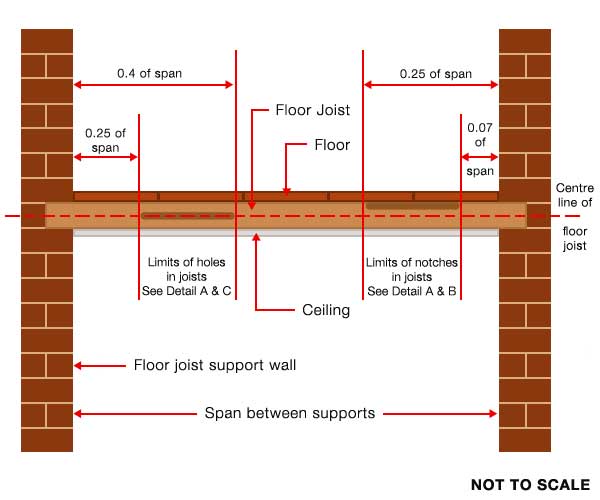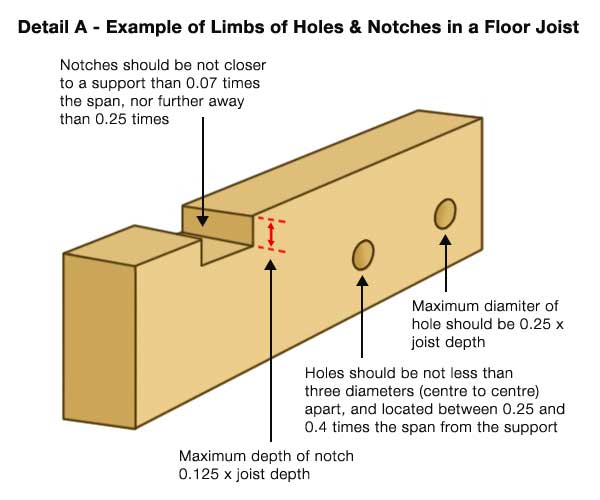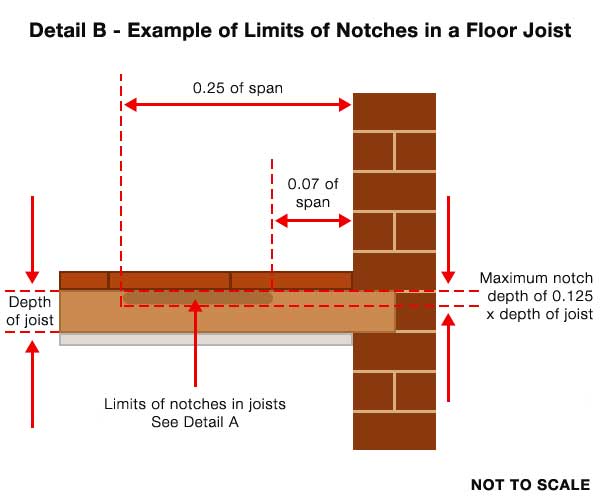In order to ensure that you are not compromising the structural integrity of any joist you must ensure that any notches and holes made in them are in safe areas. Making holes outside these areas will seriously weaken the joists and they could become dangerous.
The diagram below illustrates where notches and holes can be made into joists safely without affecting the strength of the joist significantly.
As you would imagine, any notch or hole made in a joist will weaken it so if you can avoid making them, then this is the best course of action even if it means re-routing pipework or cables.

Illustration of the rules for positioning notches and holes into floor joists

Where larger notches and holes in joists should be and how they should be made
Rules for Notches in Joists
Please follow these rules when notching joists. This also applies to wall studs for concealed showers etc…
- Notches should only be made in the top edge of the joist
- Notches should be no deeper than 0.125 times the depth of the joist
- Notches should be no closer to the structure supporting them than 0.07 times the span of the joist
- The notches should be no further away than 0.25 (¼) times the span. This is to avoid the area of maximum shear force, and the area of maximum bending in the joist

The rules for positioning notches in floor joists – Image courtesy of NICEIC)
To understand the forces at work in a joist, particularly the tension and compression forces please see our project that explains how the forces that affect buildings work.
Rules for Holes in Joists
Please follow these rules for making holes in joists:
- Holes should only be drilled on the centre line of the joist. This is where the compressive and tensile load distribution is neutralised
- Holes should have a diameter of no greater than 0.25 times the depth of the joist
- Holes should be no closer together than 3 times the largest diameter permitted
- Holes should be no closer to the support than 0.25 times the span and no further away than 0.40 times the span

Rules for positioning holes in floor joists
Like the rules for making notches in joists, the rules for making holes in to your joists are designed to ensure that the structural strength of the joist is affected in the least way possible. If you follow these rules you should not have any concerns about building control and meeting building regulations.
Joist Notch and Hole Calculator
To make life easier we have created handy calculator that will tell you the sizes and locations of the holes and notches that you can make in your joists. All you need to do is input the span of the joist between the supports and the depth of the joist:

